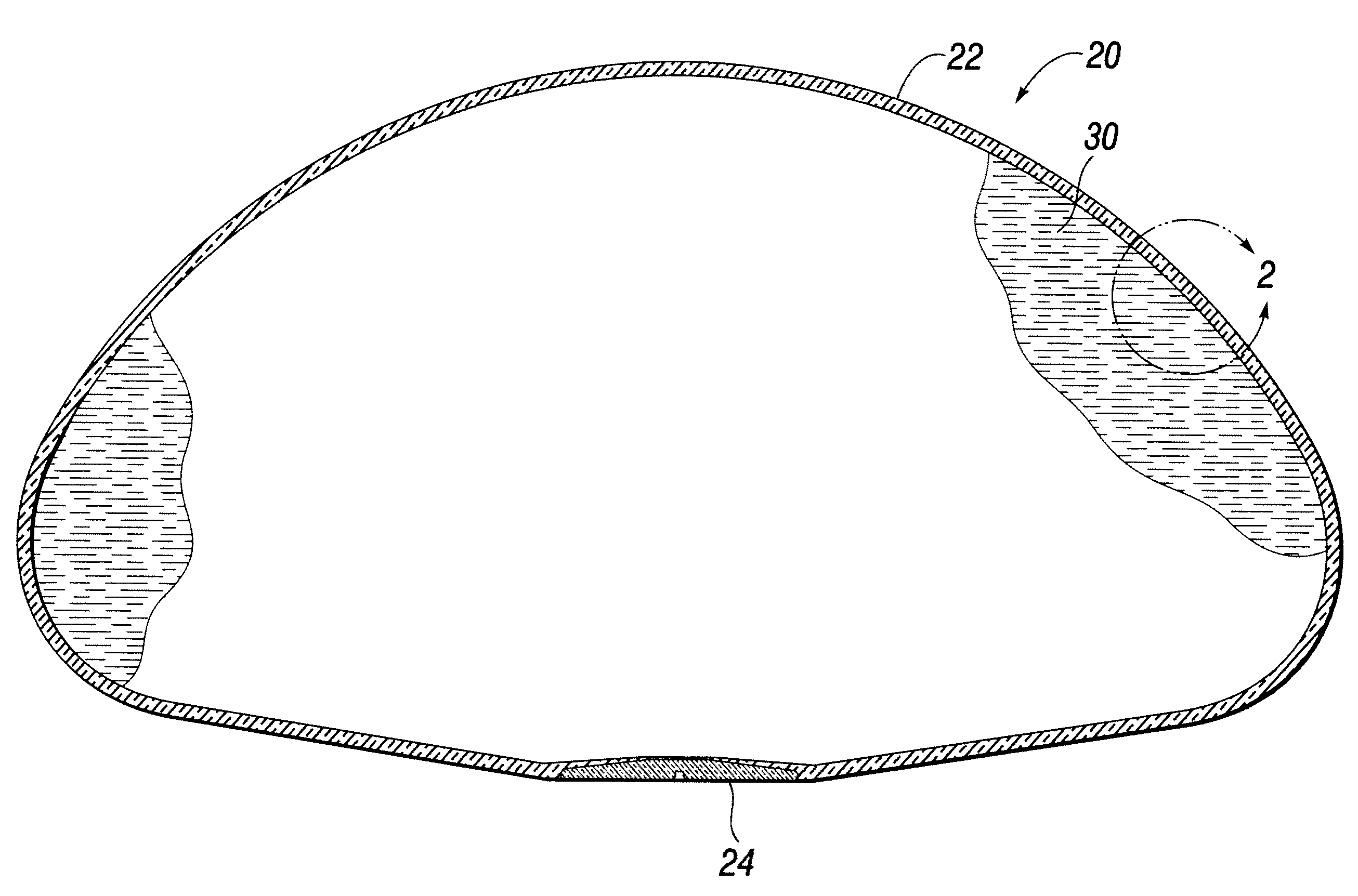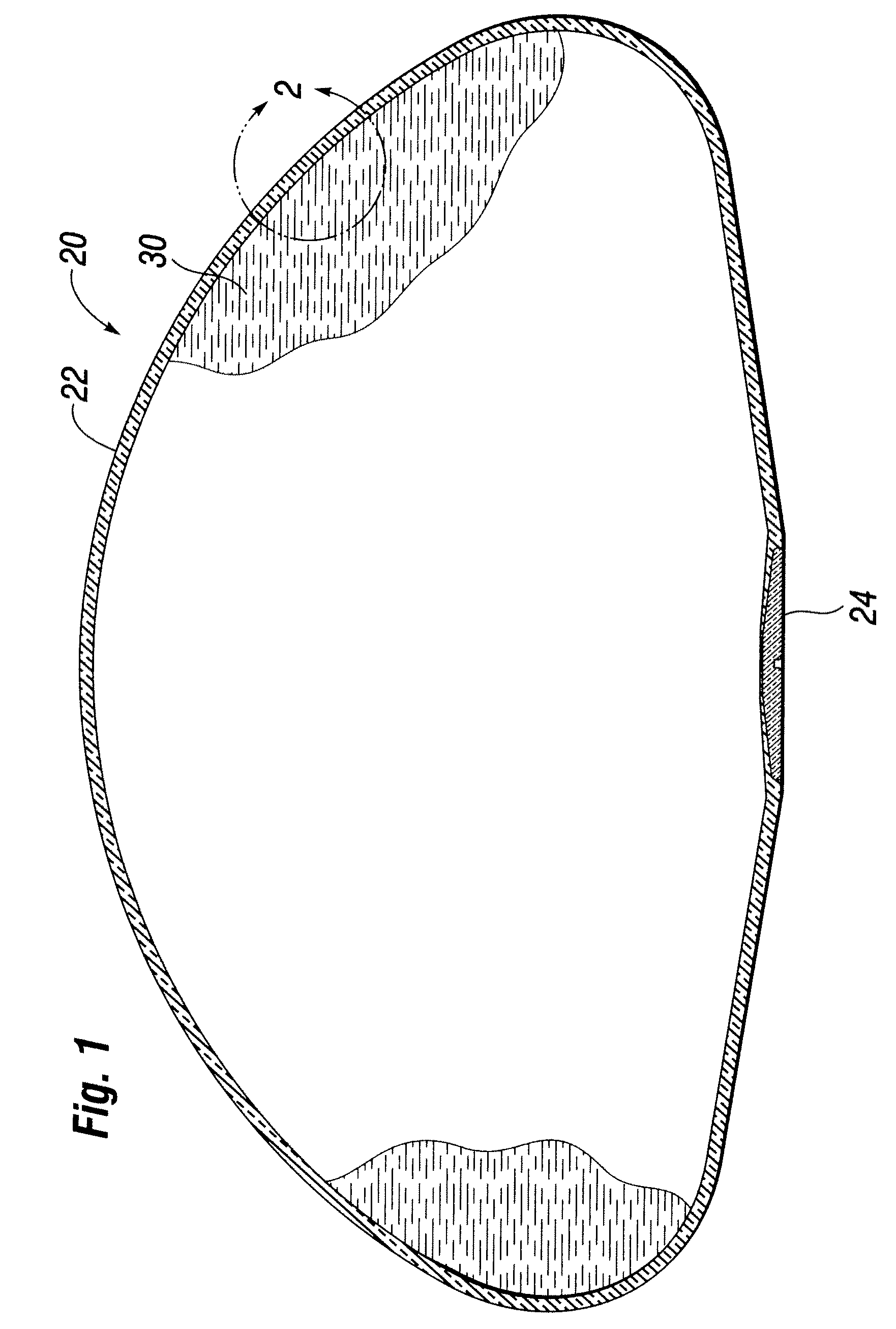Self-sealing shell for inflatable prostheses
- Summary
- Abstract
- Description
- Claims
- Application Information
AI Technical Summary
Benefits of technology
Problems solved by technology
Method used
Image
Examples
example
[0049]A silicone elastomer dispersion (polydimethyl siloxane dispersed in a xylene solvent such as NuSil MED-6640) at approximately 1000 cps is mixed with polyethylene glycol (8000 MW) powder in a ratio of about 10% by weight of silicone solids.
[0050]This mixture is dip cast over a mandrel in the desired shape of the shell. The mixture is dipped several times to achieve a thickness of 0.050″ on the mandrel surface after air drying and removal of the solvent. The shell is cured at about 121 C for about 90 minutes. The shell is removed from the mandrel. After being contacted with water, the shell is self sealing to a needle puncture.
[0051]It is contemplated that the self sealing materials of the present invention may be formed into very thin laminates which are applied in a layered fashion to traditional silicone elastomeric shells. It is further contemplated that the self-sealing material may make up one or more layers of a shell which are sandwiched between layers of silicone elasto...
PUM
| Property | Measurement | Unit |
|---|---|---|
| Fraction | aaaaa | aaaaa |
| Percent by mass | aaaaa | aaaaa |
| Percent by mass | aaaaa | aaaaa |
Abstract
Description
Claims
Application Information
 Login to View More
Login to View More - R&D
- Intellectual Property
- Life Sciences
- Materials
- Tech Scout
- Unparalleled Data Quality
- Higher Quality Content
- 60% Fewer Hallucinations
Browse by: Latest US Patents, China's latest patents, Technical Efficacy Thesaurus, Application Domain, Technology Topic, Popular Technical Reports.
© 2025 PatSnap. All rights reserved.Legal|Privacy policy|Modern Slavery Act Transparency Statement|Sitemap|About US| Contact US: help@patsnap.com


